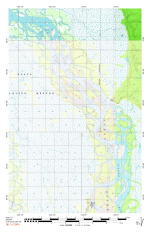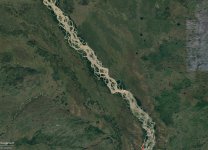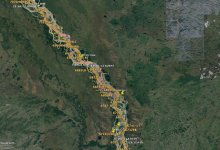I feel like I had previously posted this question, but I cannot find it for the life of me. I have done direct messages with a few fellow members (yknpldr - you are AWESOME!) asking about navigating the stretch of the Yukon downstream from Dawson, but figured I would put it out for all.
I am paddling from Whitehorse to Dalton Crossing this summer with two others (following the route of the 1K race), and am wondering how others have navigated the braids downstream of Circle, AK (we have the popular Rourke books that cover everything from Whitehorse to Circle)? We have topo maps (which are a bit too broad a scale for navigation) and we are printing maps from Google Earth / Google Maps (but that is very paper intensive). We will have electroncs with us as well, but if anyone out there has any resources for paper maps (or any general suggestions), I would love to hear!
Thanks!
I am paddling from Whitehorse to Dalton Crossing this summer with two others (following the route of the 1K race), and am wondering how others have navigated the braids downstream of Circle, AK (we have the popular Rourke books that cover everything from Whitehorse to Circle)? We have topo maps (which are a bit too broad a scale for navigation) and we are printing maps from Google Earth / Google Maps (but that is very paper intensive). We will have electroncs with us as well, but if anyone out there has any resources for paper maps (or any general suggestions), I would love to hear!
Thanks!








